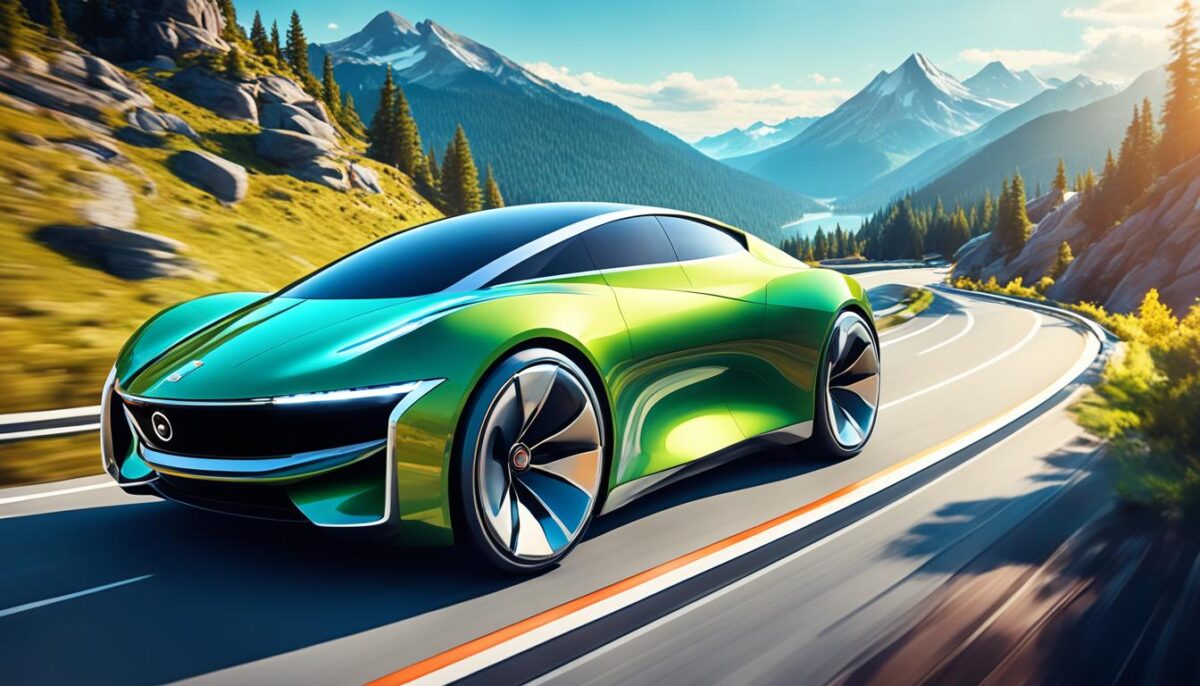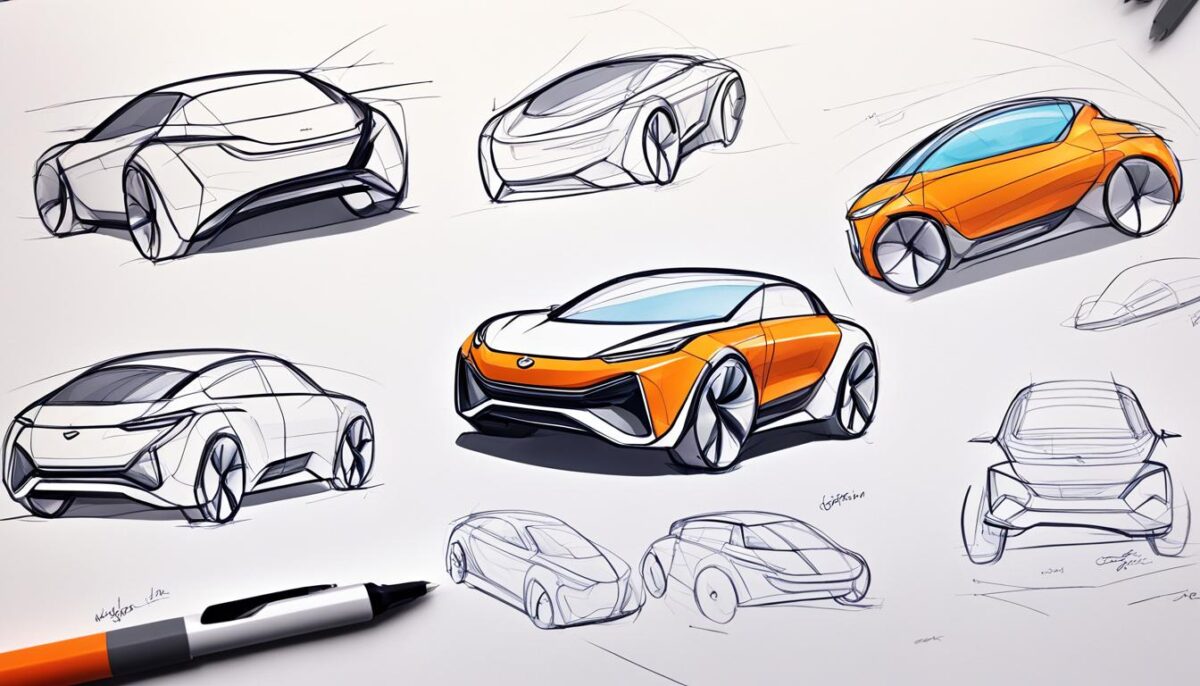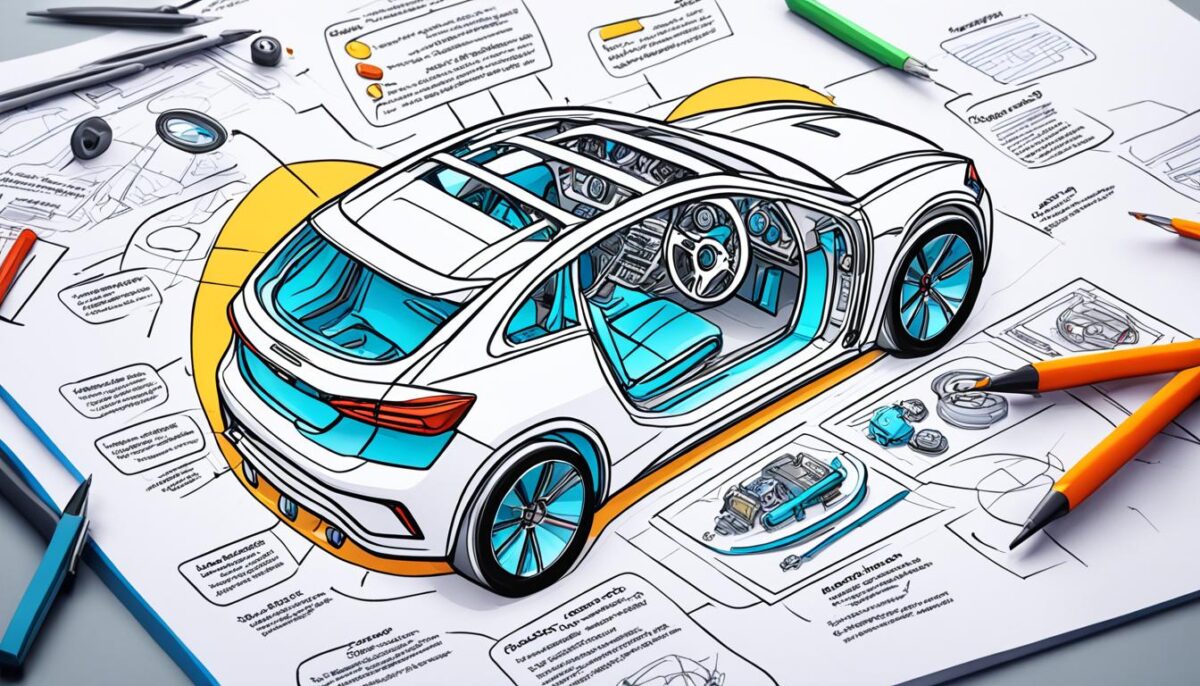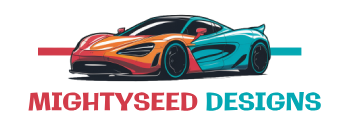Embarking on the car design process is an exhilarating journey that intertwines creativity with engineering prowess. At its core, this automotive design journey begins with a spark of inspiration, evolving through various stages until we ultimately have a physical vehicle that elegantly marries form and function. In this section, we will paint a design process overview, illuminating how innovative ideas come together through collaboration and skillful craftsmanship. Join us as we delve into this fascinating realm, where every curve and contour is meticulously crafted to capture our imagination and redefine performance.
The Creative Journey of Car Design

Car design creativity thrives on a dynamic process that takes us from initial brainstorming to the dazzling automobiles we admire. Each stage of this journey embellishes the idea of automotive concept design, transforming mere sketches into vivid reality. We explore this intricate transformation, emphasizing the value of prototyping and the advancements of computer-aided design (CAD) tools, which help to visualize our concepts and streamline revisions through iterative feedback loops.
From Concept to Reality
In the world of automotive concept design, the path from concept to reality is paved with imagination and patience. Designers engage in a series of sketches and 3D models that depict their visions. Utilizing CAD technology dramatically enhances our creativity, enabling us to fine-tune details and functionality seamlessly.
Collaboration Among Creative Minds
The most successful designs stem from robust collaboration in car design. Working hand in hand with engineers, marketers, and fellow designers allows us to meld artistic visions with practical considerations. Notable automakers like BMW and Tesla exemplify the benefits of teamwork, revealing how collective input garners innovative solutions that captivate consumers.
The Role of Market Research in Design
Our design choices are intricately linked to market research, acting as our compass in a rapidly changing industry. Engaging methods like surveys and focus groups shapes our understanding of consumer preferences. Insights from leading companies such as Honda and Ford illustrate how aligning our designs with market trends results in vehicles that resonate with buyers, merging desirability and functionality.

The Engineering Aspects of the Design Process
The integration of engineering in car design plays a crucial role in shaping the vehicles we see today. As we dive deeper into the design process, we encounter a fascinating interplay between aesthetics and functionality, underscoring the importance of both elements to create a successful vehicle. Each decision made in this process contributes to the overall vehicle functionality, ensuring it not only looks appealing but operates efficiently in real-world conditions.
Balancing Aesthetics and Functionality
In today’s automotive landscape, a vehicle’s visual appeal cannot overshadow its functional capabilities. Designers and engineers continually strive to achieve a harmonious balance between design and performance. For example, automotive brands like Mercedes Benz exemplify this balance by considering aerodynamics, safety, and performance alongside a sophisticated aesthetic. For BMW models, a VIN Decoder BMW can reveal how those design decisions translate into specific features like suspension type or engine configuration. Each design choice impacts everything from fuel efficiency to driver experience, illustrating the necessity of engineering in car design as an essential element of vehicle functionality.
Innovations in Automotive Technology
The realm of automotive technology innovations is consistently evolving, leading to exciting developments in how we design and use vehicles. Electric propulsion and autonomous driving systems are at the forefront of these changes. Innovations from companies like Tesla showcase advances in battery technology, while Toyota explores hydrogen fuel cells. These engineering breakthroughs are reshaping our approach to car design, pushing us to rethink traditional models and embrace a future where technology and design coexist seamlessly.

| Automotive Technology Innovation | Brand | Key Feature |
|---|---|---|
| Electric Propulsion | Tesla | High-efficiency battery system |
| Hydrogen Fuel Cells | Toyota | Zero-emission technology |
| Autonomous Driving | Waymo | Self-driving technology |
| Aerodynamic Design | Mercedes-Benz | Enhanced fuel efficiency |
Design Process: Challenges and Triumphs
Throughout our journey in car design, we often encounter myriad challenges that test our creativity, resilience, and determination. Budget constraints are a constant concern, pushing us to innovate while maintaining cost-effectiveness. Additionally, navigating regulatory compliance requires us to ensure that our designs meet stringent safety and environmental standards. These challenges in car design are significant hurdles, yet they drive us to think outside the box and enhance our abilities.
The victories we achieve in overcoming these obstacles create compelling success stories in automotive design. Iconic vehicles like the Ford Mustang and the Volkswagen Beetle exemplify how we can turn adversity into opportunity. The Mustang, born from a vision to create an affordable sports car, forged a legacy that continues to inspire car enthusiasts. Meanwhile, the Beetle’s journey from a simple concept to a cultural phenomenon showcases the power of resilience and clever design strategies.
As we reflect on both the challenges and triumphs we face, it becomes evident that each hurdle can lead to groundbreaking innovation. Embracing the complexities involved in our craft ultimately shapes not just outstanding vehicles, but also a brighter future for the automotive industry as a whole. In every design process, we find an opportunity to write our own success stories, championing the spirit of creativity and ingenuity.
